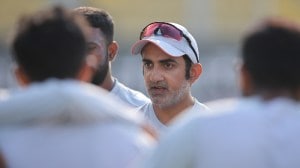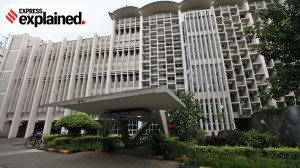Gujarat sets out to check if schoolkids deserve their marks
The six-day Shala Praveshotsav and Kanya Kelavani drive will be held in rural areas on June 8, 9 and 10 and in urban areas on June 15,16 and 17, covering 40,000 government primary and secondary schools.
 Board exams in Gujarat; the upcoming drive is for students of II to IX. File photo
Board exams in Gujarat; the upcoming drive is for students of II to IX. File photo
Over the next two weeks, Gujarat education officials will tour 40,000 government schools to check whether students are as good performers as their examination results suggest, and whether their teachers have evaluated their performance properly.
The six-day Shala Praveshotsav and Kanya Kelavani drive will be held in rural areas on June 8, 9 and 10 and in urban areas on June 15,16 and 17, covering 40,000 government primary and secondary schools. The drive by a team of roughly 500 officials, apart from ministers and the chief minister, follows poor findings in an annual evaluation drive, Gunotsav, as reported in The Indian Express. Students of classes VI to VIII had failed to even read and write simple words and sentences in Gujarati and solve simple mathematical problems.

Shala Praveshotsav and Kanya Kelavani is an enrolment drive that took off in 2002-03 but this is the first time it is being used to verify the performance of students of classes I to VIII. “We want to check where students’ understanding levels stand externally. This can also be called as a pre-Gunotsav drive. The recent Gunotsav results (in January) were not very encouraging,” Education Minister Bhupendrasinh Chudasama said.
[related-post]
In the upcoming drive, two toppers, two average students and two weak students will be sampled from each class in each school. Their performance in various skills and subjects will be evaluated for selected questions asked in the school examination, and noted alongside the teacher’s evaluation. The exam results and the performance here will then be compared. Teachers whose evaluation match that in the drive will be rewarded with an “appreciation letter” while those whose evaluation doesn’t will be reprimanded.
The team will include IAS, Indian Forest Service and IPS officers, all district education officers and primary education officers, coordinators of Cluster Resource Centres and Block Resource Centres, women’s groups and school management committees constituted under the Right to Education Act.
“Apart from taking stock of the education levels, this can also be seen as an attempt to prove the drawbacks of the no-detention policy under the RTE Act,” said a senior education department official.
The education minister agreed, “The state has been suffering since the Act was implemented. Earlier, there was never a complaint that a class VI or VII student cannot read or write simple sentences.”
In Gunotsav earlier this year, the academic performance of upper primary students students had been assessed in seven subjects: Gujarati, mathematics, Hindi, English, social science, science and technology, and Sanskrit. On the scale 0 to 10, the average level was only 5.34. Subject-wise, Hindi threw up the poorest performance at 4.67.
Gunotsav had found that 20.31 lakh students of classes VI to VIII could only answer a little above half the questions. As many as 11,446 or 46.79 per cent of Gujarat’s 24,436 upper primary schools were in the bracket 4-6. In the highest grade, 8-10, were only 1,335 schools constituting 5.46 per cent.




- 01
- 02
- 03
- 04
- 05



























